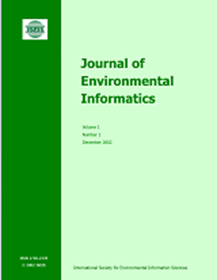Numerical Modeling of Transboundary Groundwater Flow in the Bug and San Catchment Areas for Integrated Water Resource Management (Poland–Ukraine)
IF 5.4
1区 环境科学与生态学
Q1 ENVIRONMENTAL SCIENCES
引用次数: 0
Abstract
On the Polish–Ukrainian borderlands, there is the Lublin–Lviv transboundary groundwater aquifer system, which is of key importance in shaping strategic groundwater resources. Due to the particular importance of this aquifer system, the two neighboring countries are obliged to undertake joint actions to protect it. The integrated management of the Lublin–Lviv aquifer system seems difficult due to the significant spatial and temporal scale of groundwater flows in the region. To support internationally integrated management, a transboundary geological model was developed. Based on this model, a hydrogeological conceptual model has been developed, which allowed for a numerical model of groundwater flow to be calculated. The model research helped diagnose potential problems by determining the scope of the area with cross-border flows and quantifying the flows between Poland and Ukraine. In addition, the numerical model was used to define the optimal cross-border management unit and the conditions needed to sustainably exploit the Lublin–Lviv aquifer system. Basing on the research results it was concluded that groundwater flows in transboundary aquifers very on a regional scale and that the range of areas of importance for transboundary groundwater flows is much smaller than the pre-selected partial catchments of the Bug and San Rivers. The results of this study may significantly contribute to the preparation of joint water management plans.基于水资源综合管理的Bug和San流域跨界地下水流动数值模拟(波兰-乌克兰)
在波兰-乌克兰边境,有卢布林-利沃夫跨界地下水含水层系统,这对形成战略地下水资源至关重要。由于这一含水层系统的特殊重要性,这两个邻国有义务采取联合行动来保护它。卢布林-利沃夫含水层系统的综合管理似乎很困难,因为该地区地下水流量的时空尺度很大。为了支持国际综合管理,开发了一个跨界地质模型。在此基础上,建立了水文地质概念模型,并据此建立了地下水流动的数值模型。模型研究通过确定跨境流动地区的范围和量化波兰和乌克兰之间的流动,帮助诊断潜在的问题。此外,利用数值模型确定了卢布林-利沃夫含水层系统可持续开发所需的最佳跨境管理单元和条件。研究结果表明,地下水在跨界含水层的流动具有区域尺度,跨界地下水流动的重要区域范围远小于预先选定的布格河和三河的部分集水区。本研究的结果可能对联合水资源管理计划的制定有重要的贡献。
本文章由计算机程序翻译,如有差异,请以英文原文为准。
求助全文
约1分钟内获得全文
求助全文
来源期刊

Journal of Environmental Informatics
ENVIRONMENTAL SCIENCES-
CiteScore
12.40
自引率
2.90%
发文量
7
审稿时长
24 months
期刊介绍:
Journal of Environmental Informatics (JEI) is an international, peer-reviewed, and interdisciplinary publication designed to foster research innovation and discovery on basic science and information technology for addressing various environmental problems. The journal aims to motivate and enhance the integration of science and technology to help develop sustainable solutions that are consensus-oriented, risk-informed, scientifically-based and cost-effective. JEI serves researchers, educators and practitioners who are interested in theoretical and/or applied aspects of environmental science, regardless of disciplinary boundaries. The topics addressed by the journal include:
- Planning of energy, environmental and ecological management systems
- Simulation, optimization and Environmental decision support
- Environmental geomatics - GIS, RS and other spatial information technologies
- Informatics for environmental chemistry and biochemistry
- Environmental applications of functional materials
- Environmental phenomena at atomic, molecular and macromolecular scales
- Modeling of chemical, biological and environmental processes
- Modeling of biotechnological systems for enhanced pollution mitigation
- Computer graphics and visualization for environmental decision support
- Artificial intelligence and expert systems for environmental applications
- Environmental statistics and risk analysis
- Climate modeling, downscaling, impact assessment, and adaptation planning
- Other areas of environmental systems science and information technology.
 求助内容:
求助内容: 应助结果提醒方式:
应助结果提醒方式:


